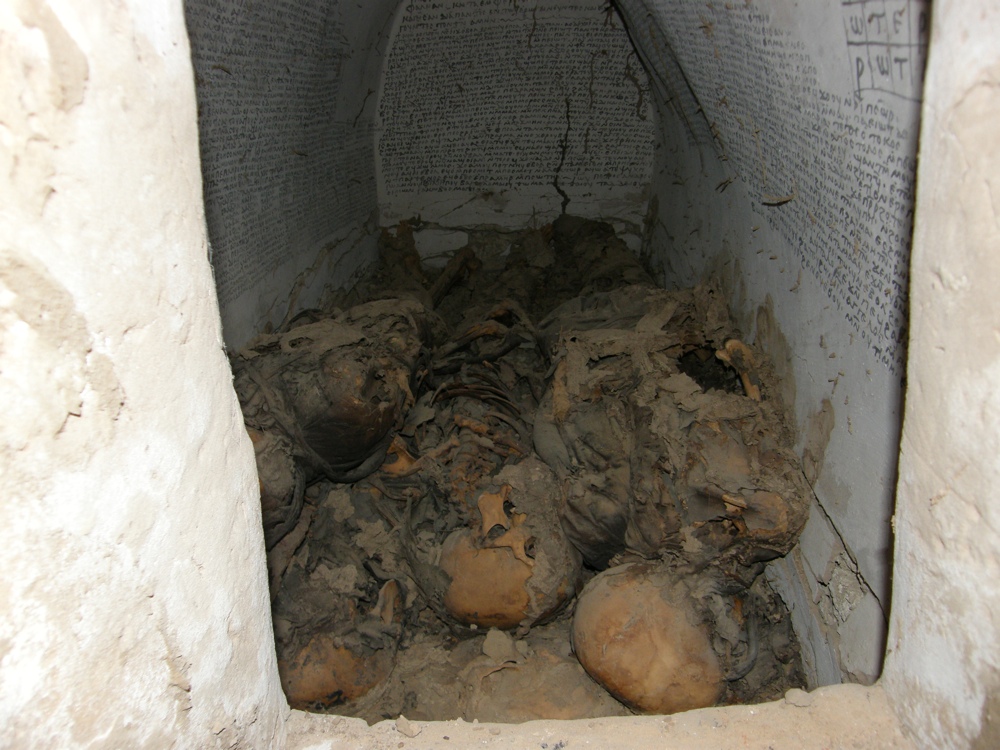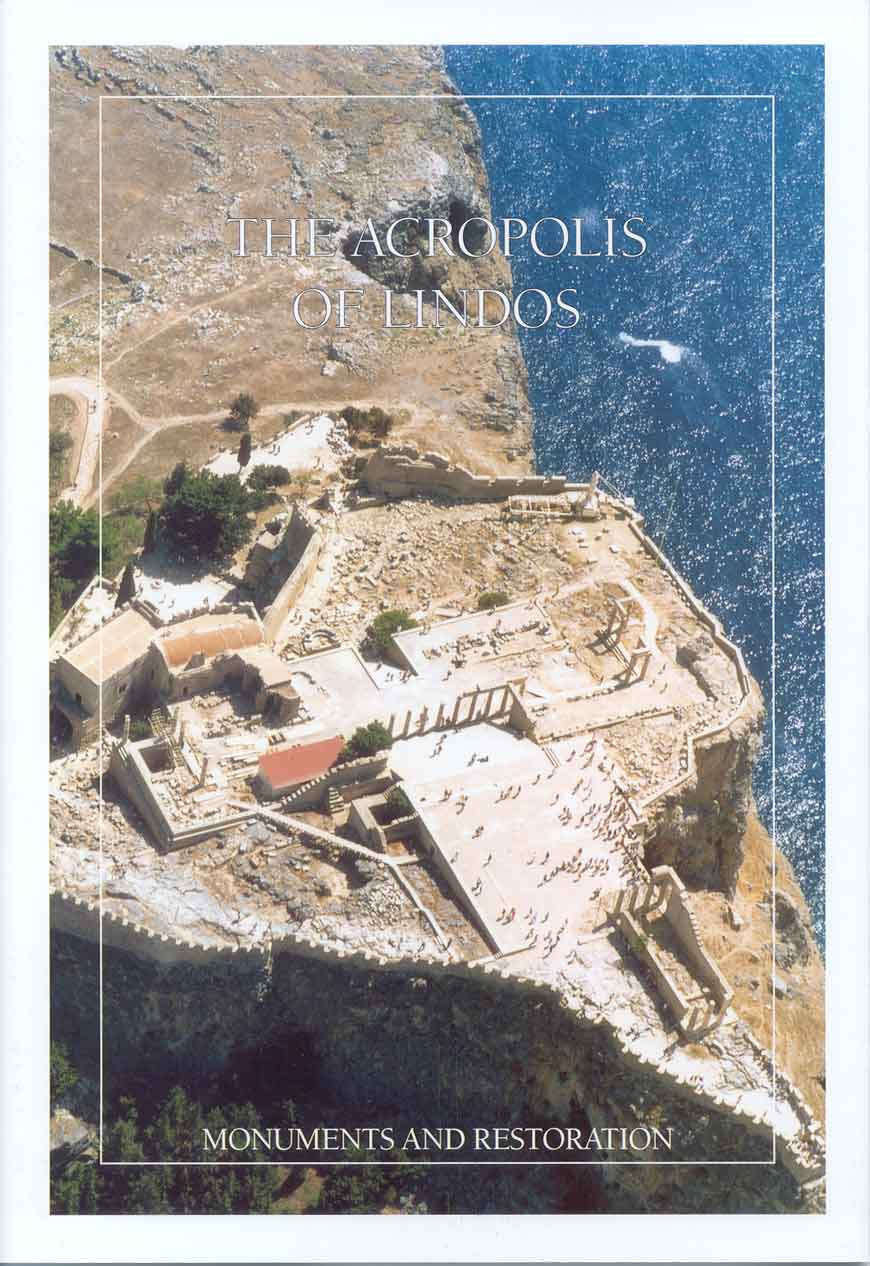
hellenic period
The Tunnel of Eupalinos
(by Dan Hughes, with appendix by Hans J. Keller)I've just had a small but splendid adventure, the recounting of which requires some background that will take up the beginning of this story. It all took place in the week 8 to 15 April 2000. (It's written approximately as it happened, and things are reported the way we thought they were. However there are some addenda at the end, with additional or more accurate information that I, or we, came across later.)
Datca Peninsula - Exploring Ancient Greek City of Knidos
Restoration of ancient Greek theatre underway
Already one of Turkey’s most enjoyable getaways for the discerning tourist, Datca at the confluence of the Aegean and Mediterranean seas will soon have even more to offer with the planned restoration of the 2,600-year-old theatre of Knidos.


The Dexileos Stele: A Study of Aristocracy and Democracy in Greek
by James Lloyd
The Dexileos Stele assesses the way that Athenian political thought penetrated all levels of society, showing the conflict that the aristocratic classes were faced with in trying to find their place within the Athenian Democracy. As a visual document it presents an image that would have been seen and understood to those who passed it; despite being a cavalryman, a typically elite element of the military, Dexileos was still firmly a part of the Athenian demos. The stele dates to a turbulent time in Athens' history. Having lost the Peloponnesian War, Athens was ruled by 30 Tyrants, and when Democracy was restored, the Tyrants were then harshly punished, and Athens found herself at war with Corinth (c. 394 BCE). The Dexileos Stele perfectly encapsulates the struggles and changing ideologies that were present in Athens at the time, and as a monument to the young man's death, it shows him as his family wished for him to ever be remembered.

The Dexileos Stele assesses the way that Athenian political thought penetrated all levels of society, showing the conflict that the aristocratic classes were faced with in trying to find their place within the Athenian Democracy. As a visual document it presents an image that would have been seen and understood to those who passed it; despite being a cavalryman, a typically elite element of the military, Dexileos was still firmly a part of the Athenian demos. The stele dates to a turbulent time in Athens' history. Having lost the Peloponnesian War, Athens was ruled by 30 Tyrants, and when Democracy was restored, the Tyrants were then harshly punished, and Athens found herself at war with Corinth (c. 394 BCE). The Dexileos Stele perfectly encapsulates the struggles and changing ideologies that were present in Athens at the time, and as a monument to the young man's death, it shows him as his family wished for him to ever be remembered.

Ancient Greek Society
by Mark Cartwright
Although the male citizen, with his full legal status, right to vote, hold public office, and own property, may well have dominated Greek Society, the social groups which made up the population of a typical Greek city-state or polis were remarkably diverse. Women, children, immigrants (both Greek and foreign), labourers, and slaves all had defined roles, but there was interaction (often illicit) between the classes and there was also some movement between social groups, particularly for second generation offspring and during times of stress such as wars.

Although the male citizen, with his full legal status, right to vote, hold public office, and own property, may well have dominated Greek Society, the social groups which made up the population of a typical Greek city-state or polis were remarkably diverse. Women, children, immigrants (both Greek and foreign), labourers, and slaves all had defined roles, but there was interaction (often illicit) between the classes and there was also some movement between social groups, particularly for second generation offspring and during times of stress such as wars.

Who borns at thebes
| Teiresias Teiresias, the most famous soothsayer of Greece, was born at Thebes. He was the son of Eueres and Chariclo, descendant of Udaeus of Sparti. He was blind and there are many stories for the cause of his blindness. The most wide accepted tradition was that at age seven the Gods blinded him, because he revealed certain things, men ought not to know. |
History of Thebes
Cities in ancient Greece were built in fertile plains and close to a high ground (Acropolis) for protection and they were all walled (except Sparta). In the big and fertile Boeotian plain there were numerous ones, among them Orchomenos and Thebes, very ancient cities which became big powers.
Samothrace The island of the Great Gods
Referred by mythology as island of Aeolus, Samothrace (you’ll see it spelt “Samothraki” too) is wreathed bymount Saos, the highest mountain on the Aegean islands; legend has it that Poseidon sat on its top to watch the Troy war. The attractiveness of the island is now made up of the steep peaks of the holy mountain of the ancients (the highest of which – 1.611 metres- is called “Fengari” = “moon”) the pebbly beaches, the streams and rivers, the pristine natural beauty, the famous healing sources, and the archaeological finds.
Ephesus history
Ephesus (Efes) is close to the town of Selcuk about an hours
drive south of Izmir. Kusadasi is the nearest larger town, about 20km from
Efes.
The Temple of Artemis at Ephesus was one of the seven
wonders of the ancient world and was built around 550 BC, it was about four
times the size of the Parthenon. Ephesus was part of the kingdom of Pergamum
which Attalus III bequeathed to Rome in 133 BC. Ephesus was the most important Greek Roman city of proconsular Asia. Situated at the mouth of the Cayster River on a
gulf of the Aegean sea, it flourished as an important commercial and export
centre for Asia. By NT times it had grown to at least 250,000 people (Mounce).
Gradually the harbour silted up and is now some miles from the sea. In modern
day Turkey Ephesus is known as Efes. The Selçuk-Ephesus Museum is a must
visit, many of the photos of statues are from the museum.
Ephesus
|
|
Ephesus
In
the ancient world, Ephesus was a center of travel and commerce.
Situated on the Aegean Sea at the mouth of the Cayster River, the city
was one of the greatest seaports of the ancient world.
Three
major roads led from the seaport: one road went east towards Babylon via
Laodicea, another to the north via Smyrna and a third south to the
Meander Valley.
|
Culture And Ancient Cities of Rethymno
The existence of human life during the Neolithic period (6000 -2600
BC) is proved by archaeological findings in the Ideon Andron cave on
Mount Psiloritis, the Gerani cave west of Rethymnon and the Elenon cave
in the Amari district.
The greater number of archaeological findings dating back to the Minoan period (2600-1100 BC) can be explained by the fact that human existence and activity became more common both in caves as well as in a variety of other dwelling places, the remains of which cover the entire area of the Prefecture and are evidence of every stage of the Minoan period. Dating back to the Early Minoan period (2600-2000 BC) in the Mylopotamos area are the Sfentoni Cave in Zoniana and Pyrgi, Eletherna, in the Municipality of Rethymno are the sites of Chamelevri, and Apodoulou in the Amari district.
The greater number of archaeological findings dating back to the Minoan period (2600-1100 BC) can be explained by the fact that human existence and activity became more common both in caves as well as in a variety of other dwelling places, the remains of which cover the entire area of the Prefecture and are evidence of every stage of the Minoan period. Dating back to the Early Minoan period (2600-2000 BC) in the Mylopotamos area are the Sfentoni Cave in Zoniana and Pyrgi, Eletherna, in the Municipality of Rethymno are the sites of Chamelevri, and Apodoulou in the Amari district.
List of Ancient Greek temples
This list of Ancient Greek temples covers temples built by the
Hellenic people from the 6th century BC until the 2nd century AD on
mainland Greece and in Hellenic towns in the Aegean Islands, Asia Minor,
Sicily and Italy, wherever there were Greek colonies, and the
establishment of Greek culture. Ancient Greek architecture was of very regular form, the construction being "post and lintel". There are three clearly defined styles: the Doric Order, found throughout Greece, Sicily and Italy; the Ionic Order, from Asia Minor, with examples in Greece; and the more ornate Corinthian Order,
used initially only for interiors, become more widely used during the
Hellenistic period from the 1st century BC onwards and used extensively
by Roman architects.
Εγγραφή σε:
Αναρτήσεις (Atom)










